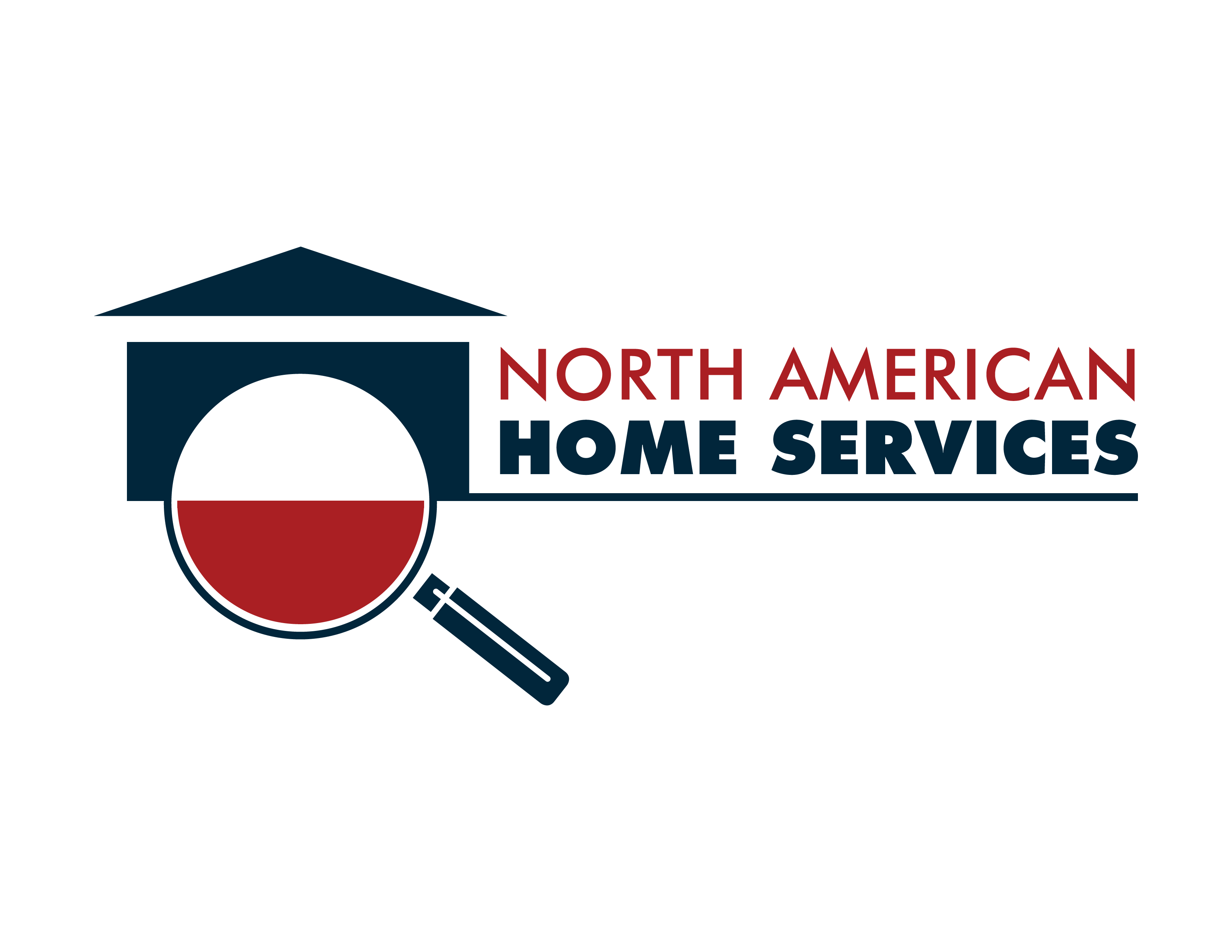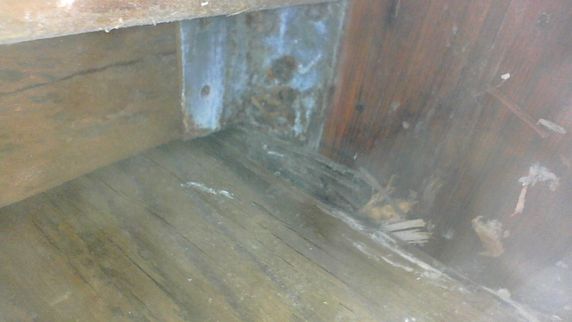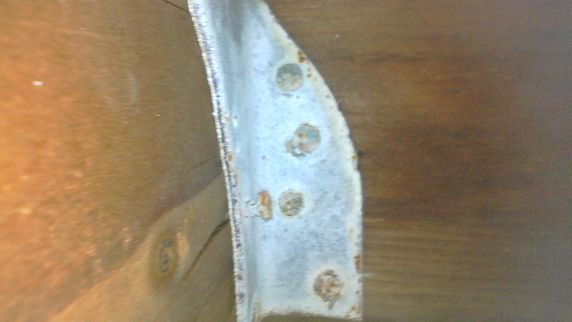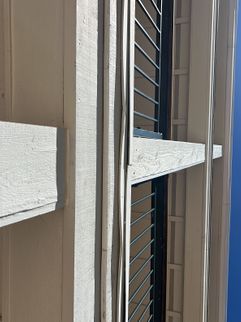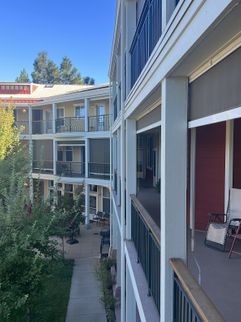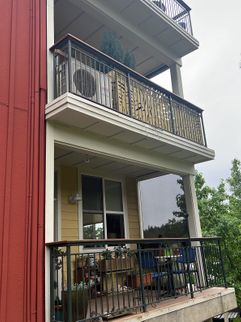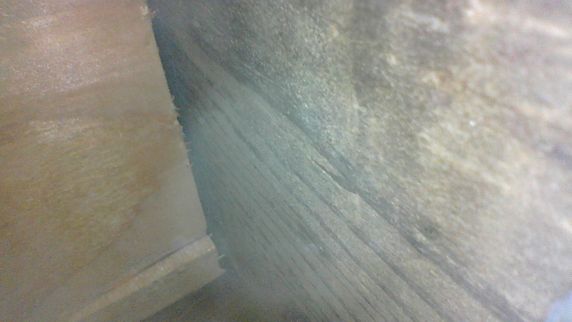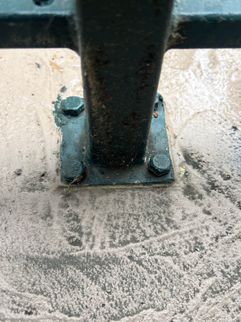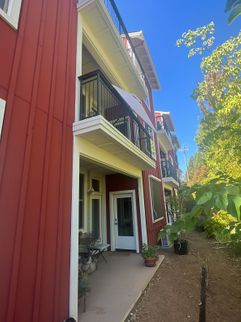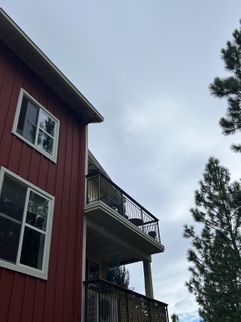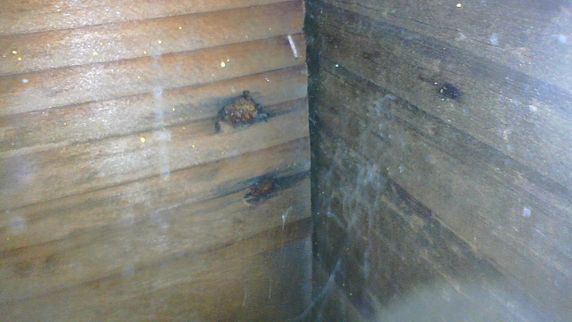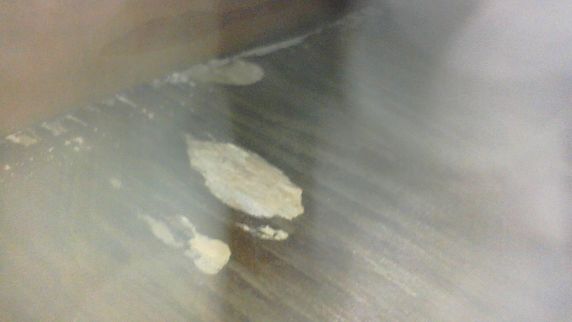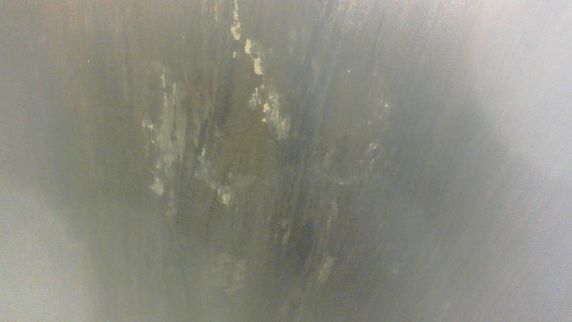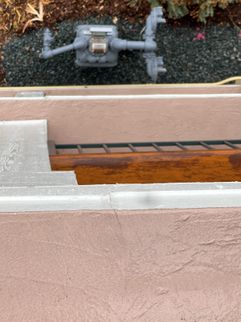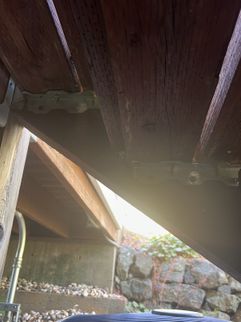Cal. Health & Saf. Code § 17973
Section 17973 - Generally
(a) Exterior elevated elements that include load-bearing components in all buildings containing three or more multifamily dwelling units shall be inspected. The inspection shall be performed by a licensed architect; licensed civil or structural engineer; a building contractor holding any or all of the "A," "B," or "C-5" license classifications issued by the Contractors State License Board, with a minimum of five years' experience, as a holder of the aforementioned classifications or licenses, in constructing multistory wood frame buildings; or an individual certified as a building inspector or building official from a recognized state, national, or international association, as determined by the local jurisdiction. These individuals shall not be employed by the local jurisdiction while performing these inspections. The purpose of the inspection is to determine that exterior elevated elements and their associated waterproofing elements are in a generally safe condition, adequate working order, and free from any hazardous condition caused by fungus, deterioration, decay, or improper alteration to the extent that the life, limb, health, property, safety, or welfare of the public or the occupants is not endangered. The person or business performing the inspection shall be hired by the owner of the building. (b) For purposes of this section, the following terms have the following definitions:
(1) "Associated waterproofing elements" include flashings, membranes, coatings, and sealants that protect the load-bearing components of exterior elevated elements from exposure to water and the elements.
(2) "Exterior elevated element" means the following types of structures, including their supports and railings: balconies, decks, porches, stairways, walkways, and entry structures that extend beyond exterior walls of the building and which have a walking surface that is elevated more than six feet above ground level, are designed for human occupancy or use, and rely in whole or in substantial part on wood or wood-based products for structural support or stability of the exterior elevated element.
(3) "Load-bearing components" are those components that extend beyond the exterior walls of the building to deliver structural loads from the exterior elevated element to the building.
(c) The inspection required by this section shall at a minimum include:
(1) Identification of each type of exterior elevated element that, if found to be defective, decayed, or deteriorated to the extent that it does not meet its load requirements, would, in the opinion of the inspector, constitute a threat to the health or safety of the occupants.
(2) Assessment of the load-bearing components and associated waterproofing elements of the exterior elevated elements identified in paragraph (1) using methods allowing for evaluation of their performance by direct visual examination or comparable means of evaluating their performance. For purposes of this section, a sample of at least 15 percent of each type of exterior elevated element shall be inspected.
Section 17973 - Generally Cal. Health & Saf. Code § 17973
(3) The evaluation and assessment shall address each of the following as of the date of the evaluation:
(A) The current condition of the exterior elevated elements.
(B) Expectations of future performance and projected service life.
(C) Recommendations of any further inspection necessary.
(4) A written report of the evaluation stamped or signed by the inspector presented to the owner of the building or the owner's designated agent within 45 days of completion of the inspection. The report shall include photographs, any test results, and narrative sufficient to establish a baseline of the condition of the components inspected that can be compared to the results of subsequent inspections. In addition to the evaluation required by this section, the report shall advise which, if any, exterior elevated element poses an immediate threat to the safety of the occupants, and whether preventing occupant access or conducting emergency repairs, including shoring, are necessary.
(d) The inspection shall be completed by January 1, 2025, and by January 1 every six years thereafter. The inspector conducting the inspection shall produce an initial report pursuant to paragraph (4) of subdivision (c) and, if requested by the owner, a final report indicating that any required repairs have been completed. A copy of any report that recommends immediate repairs, advises that any building assembly poses an immediate threat to the safety of the occupants, or that preventing occupant access or emergency repairs, including shoring, are necessary, shall be provided by the inspector to the owner of the building and to the local enforcement agency within 15 days of completion of the report. Subsequent inspection reports shall incorporate copies of prior inspection reports, including the locations of the exterior elevated elements inspected. Local enforcement agencies may determine whether any additional information is to be provided in the report and may require a copy of the initial or final reports, or both, be submitted to the local jurisdiction. Copies of all inspection reports shall be maintained in the building owner's permanent records for not less than two inspection cycles, and shall be disclosed and delivered to the buyer at the time of any subsequent sale of the building.
(e) The inspection of buildings for which a building permit application has been submitted on or after January 1, 2019, shall occur no later than six years following issuance of a certificate of occupancy from the local jurisdiction and shall otherwise comply with the provisions of this section.
(f) If the property was inspected within three years prior to January 1, 2019, by an inspector as described in subdivision (a) and a report of that inspector was issued stating that the exterior elevated elements and associated waterproofing elements are in proper working condition and do not pose a threat to the health and safety of the public, no new inspection pursuant to this section shall be required until January 1, 2025.
(g) An exterior elevated element found by the inspector that is in need of repair or replacement shall be corrected by the owner of the building. All necessary permits for repair or replacement shall be obtained from the local jurisdiction. All repair and replacement work shall be performed by a qualified and licensed contractor in compliance with all of the following:
Section 17973 - Generally Cal. Health & Saf. Code § 17973
(1) The recommendations of a licensed professional described in subdivision (a). (2) Any applicable manufacturer's specifications.
(3) The California Building Standards Code, consistent with subdivision (d) of Section 17922 of the Health and Safety Code.
(4) All local jurisdictional requirements.
(h)
(1) An exterior elevated element that the inspector advises poses an immediate threat to the safety of the occupants, or finds preventing occupant access or emergency repairs, including shoring, or both, are necessary, shall be considered an emergency condition and the owner of the building shall perform required preventive measures immediately. Immediately preventing occupant access to the exterior elevated element until emergency repairs can be completed constitutes compliance with this paragraph. Repairs of emergency conditions shall comply with the requirements of subdivision (g), be inspected by the inspector, and reported to the local enforcement agency.
(2) The owner of the building requiring corrective work to an exterior elevated element that, in the opinion of the inspector, does not pose an immediate threat to the safety of the occupants, shall apply for a permit within 120 days of receipt of the inspection report. Once the permit is approved, the owner of the building shall have 120 days to make the repairs unless an extension of time is granted by the local enforcement agency.
(i)
(1) The owner of the building shall be responsible for complying with the requirements of this section.
(2) If the owner of the building does not comply with the repair requirements within 180 days, the inspector shall notify the local enforcement agency and the owner of the building. If within 30 days of the date of the notice the repairs are not completed, the owner of the building shall be assessed a civil penalty based on the fee schedule set by the local authority of not less than one hundred dollars ($100) nor more than five hundred dollars ($500) per day until the repairs are completed, unless an extension of time is granted by the local enforcement agency.
(3) In the event that a civil penalty is assessed pursuant to this section, a building safety lien may be recorded in the county recorder's office by the local jurisdiction in the county in which the parcel of land is located and from the date of recording shall have the force, effect, and priority of a judgment lien.
(j)
(1) A building safety lien authorized by this section shall specify the amount of the lien, the name of the agency on whose behalf the lien is imposed, the street address, the legal description and assessor's parcel number of the parcel on which the lien is imposed, and the name and address of the recorded owner of the building.
Section 17973 - Generally Cal. Health & Saf. Code § 17973
(2) In the event that the lien is discharged, released, or satisfied, either through payment or foreclosure, notice of the discharge containing the information specified in paragraph (1) shall be recorded by the governmental agency. A safety lien and the release of the lien shall be indexed in the grantor-grantee index.
(3) A building safety lien may be foreclosed by an action brought by the appropriate local jurisdiction for a money judgment.
(4) Notwithstanding any other law, the county recorder may impose a fee on the city to reimburse the costs of processing and recording the lien and providing notice to the owner of the building. A city may recover from the owner of the building any costs incurred regarding the processing and recording of the lien and providing notice to the owner of the building as part of its foreclosure action to enforce the lien.
(k) The continued and ongoing maintenance of exterior elevated elements in a safe and functional condition in compliance with these provisions shall be the responsibility of the owner of the building.
(l) Local enforcement agencies shall have the ability to recover enforcement costs associated with the requirements of this section.
(m) For any building subject to the provisions of this section that is proposed for conversion to condominiums to be sold to the public after January 1, 2019, the inspection required by this section shall be conducted prior to the first close of escrow of a separate interest in the project and shall include the inspector's recommendations for repair or replacement of any exterior elevated element found to be defective, decayed, or deteriorated to the extent that it does not meet its load requirements, and would, in the opinion of the inspector, constitute a threat to the health or safety of the occupants. The inspection report and written confirmation by the inspector that any repairs or replacements recommended by the inspector have been completed shall be submitted to the Department of Real Estate by the proponent of the conversion and shall be a condition to the issuance of the final public report. A complete copy of the inspection report and written confirmation by the inspector that any repairs or replacements recommended by the inspector have been completed shall be included with the written statement of defects required by Section 1134 of the Civil Code, and provided to the local jurisdiction in which the project is located. The inspection, report, and confirmation of completed repairs shall be a condition of the issuance of a final inspection or certificate of occupancy by the local jurisdiction.
(n) This section shall not apply to a common interest development, as defined in Section 4100 of the Civil Code.
(o) The governing body of any city, county, or city and county, may enact ordinances or laws imposing requirements greater than those imposed by this section.
Ca. Health and Saf. Code § 17973
Amended by Stats 2021 ch 367 (SB 607),s 34, eff. 1/1/2022.
Added by Stats 2018 ch 445 (SB 721),s 2, eff. 1/1/2019.
4
Summary
Expected Future Performance
- 2FW-1 2nd Floor Walkway:
The expected remaining useful service life for this element is 2+ Years
Recommendation
Implement regular scheduled maintenance inspections as needed.
- 3FW-1 3rd Floor Walkway:
The expected remaining useful service life for this element is 2+ Years
Recommendation
Implement regular scheduled maintenance inspections as needed.
- B25-1 Balcony #201:
The expected remaining useful service life for this element is 2+ Years
Recommendation
Implement regular scheduled maintenance inspections as needed.
- B23-1 Balcony #203:
The expected remaining useful service life for this element is 2+ Years
Recommendation
Implement regular scheduled maintenance inspections as needed.
- B21-1 Balcony #209:
The expected remaining useful service life for this element is 2+ Years
Recommendation
Implement regular scheduled maintenance inspections as needed.
- B2-1 Balcony #210:
The expected remaining useful service life for this element is 2+ Years
Recommendation
Implement regular scheduled maintenance inspections as needed.
- B22-1 Balcony #211:
The expected remaining useful service life for this element is 2+ Years
Recommendation
Implement regular scheduled maintenance inspections as needed.
- B32-2 Balcony #301:
The expected remaining useful service life for this element is 2+ Years
Recommendation
Implement regular scheduled maintenance inspections as needed.
- B34-2 Balcony #302:
The expected remaining useful service life for this element is 2+ Years
Recommendation
Implement regular scheduled maintenance inspections as needed.
- B35-1 Balcony #303:
The expected remaining useful service life for this element is 2+ Years
Recommendation
Implement regular scheduled maintenance inspections as needed.
- B33-1 Balcony #309:
The expected remaining useful service life for this element is 2+ Years
Recommendation
Implement regular scheduled maintenance inspections as needed. This balcony has significant signs of moisture intrusion. Owner or interested parties to contact the contractor that installed the system for further evaluation and recommendation.
- B31-1 Balcony #310:
The expected remaining useful service life for this element is 2+ Years
Recommendation
Implement regular scheduled maintenance inspections as needed.
- B3-2 Balcony #311:
The expected remaining useful service life for this element is 2+ Years
Recommendation
Implement regular scheduled maintenance inspections as needed.
- RC-2 Rear Catwalk:
The expected remaining useful service life for this element is 2+ Years
Recommendation
Implement regular scheduled maintenance inspections as needed.
Maintenance Requireds
- 2FW-2 2nd Floor Walkway:
Maintenance repairs are required for this element to ensure reliable performance.
EXAMPLES OF SPECIFIC OBSERVATIONS NOTED DURING INSPECTION INCLUDES:
- 3FW-2 3rd Floor Walkway:
Maintenance repairs are required for this element to ensure reliable performance.
EXAMPLES OF SPECIFIC OBSERVATIONS NOTED DURING INSPECTION INCLUDES:
- B25-2 Balcony #201:
Maintenance repairs are required for this element to ensure reliable performance.
EXAMPLES OF SPECIFIC OBSERVATIONS NOTED DURING INSPECTION INCLUDES:
- B23-2 Balcony #203:
Maintenance repairs are required for this element to ensure reliable performance.
EXAMPLES OF SPECIFIC OBSERVATIONS NOTED DURING INSPECTION INCLUDES:
- B21-2 Balcony #209:
Maintenance repairs are required for this element to ensure reliable performance.
EXAMPLES OF SPECIFIC OBSERVATIONS NOTED DURING INSPECTION INCLUDES:
- B2-2 Balcony #210:
Maintenance repairs are required for this element to ensure reliable performance.
EXAMPLES OF SPECIFIC OBSERVATIONS NOTED DURING INSPECTION INCLUDES:
- B22-2 Balcony #211:
Maintenance repairs are required for this element to ensure reliable performance.
EXAMPLES OF SPECIFIC OBSERVATIONS NOTED DURING INSPECTION INCLUDES:
- B32-1 Balcony #301:
Maintenance repairs are required for this element to ensure reliable performance.
EXAMPLES OF SPECIFIC OBSERVATIONS NOTED DURING INSPECTION INCLUDES:
- B34-1 Balcony #302:
Maintenance repairs are required for this element to ensure reliable performance.
EXAMPLES OF SPECIFIC OBSERVATIONS NOTED DURING INSPECTION INCLUDES:
- B35-2 Balcony #303:
Maintenance repairs are required for this element to ensure reliable performance.
EXAMPLES OF SPECIFIC OBSERVATIONS NOTED DURING INSPECTION INCLUDES:
- B33-2 Balcony #309:
Maintenance repairs are required for this element to ensure reliable performance.
EXAMPLES OF SPECIFIC OBSERVATIONS NOTED DURING INSPECTION INCLUDES:
- B31-2 Balcony #310:
Maintenance repairs are required for this element to ensure reliable performance.
EXAMPLES OF SPECIFIC OBSERVATIONS NOTED DURING INSPECTION INCLUDES:
- B3-1 Balcony #311:
Maintenance repairs are required for this element to ensure reliable performance.
EXAMPLES OF SPECIFIC OBSERVATIONS NOTED DURING INSPECTION INCLUDES:
- RC-1 Rear Catwalk:
Maintenance repairs are required for this element to ensure reliable performance.
EXAMPLES OF SPECIFIC OBSERVATIONS NOTED DURING INSPECTION INCLUDES:
Exterior Element Report
Exterior Elevated Element Inspection Overview
Description of the Investigative Program Implemented
In this job we have sampled 15% of the balconies for inspection. Testing procedures used in this inspection include Visual Inspection, Destructive Testing and Video Scope/ Borescope
Guardrail Testing Note
DECK GUARDS TESTING NOTE
Guards for decks are required to resist 200 lbs. of lateral force. There is no practical way for a building inspector to determine if the guards on this property meet these requirements. When decks are built per prescriptive code, it is possible the requirement has been met, but this can be affected by age and types of materials etc.
Guards are tested during an inspection by physically pushing on the top of the guard to get a sense of its resistance. However, this is limited and useful only for finding egregious problems with the guard. A moving object hitting against the guard can multiply the force and result in a failure that could not be determined by normal testing. Guards on decks are inherently dangerous and should be frequently inspected by a qualified party.
This clarification from OSHA is informative:
There are no specific guidelines for relating the 200 pounds strength requirement to a stress design criteria. The yield strength of a material is a good guide, providing the railing protecting the employee complies with the above … (the codes). (Quotations are to make the comment related more to residential structures as opposed to those covered by the Occupational Safety and Health Administration.)
2nd Floor Walkway
Element 1
i. CURRENT CONDITION 🔎: .
Flashings: Inspected, Serviceable
Membranes: Inspected
Coatings: Serviceable, Inspected
Sealants: Inspected, Serviceable
Support Structure: Inspected, Serviceable
Ventilation: Inspected, Present
ii EXPECTED FUTURE PERFORMANCE SERVICE LIFE: 2+ YEARS
iii RECOMMENDATIONS: Maintenance Required
The expected remaining useful service life for this element is 2+ Years
Recommendation
Implement regular scheduled maintenance inspections as needed.
Maintenance repairs are required for this element to ensure reliable performance.
EXAMPLES OF SPECIFIC OBSERVATIONS NOTED DURING INSPECTION INCLUDES:
3rd Floor Walkway
Element 1
i. CURRENT CONDITION 🔎: .
Flashings: Inspected, Serviceable
Membranes: Inspected
Coatings: Inspected, Serviceable
Sealants: Inspected, Serviceable
Support Structure: Inspected, Serviceable
Ventilation: Inspected, Present
ii EXPECTED FUTURE PERFORMANCE SERVICE LIFE: 2+ YEARS
iii RECOMMENDATIONS: Maintenance Required
The expected remaining useful service life for this element is 2+ Years
Recommendation
Implement regular scheduled maintenance inspections as needed.
Maintenance repairs are required for this element to ensure reliable performance.
EXAMPLES OF SPECIFIC OBSERVATIONS NOTED DURING INSPECTION INCLUDES:
Balcony #201
Element 1
i. CURRENT CONDITION 🔎: .
Flashings: Inspected, Serviceable
Membranes: Not applicable
Coatings: Inspected, Serviceable
Sealants: Inspected, Serviceable
Support Structure: Inspected, Serviceable
Ventilation: Inadequate
ii EXPECTED FUTURE PERFORMANCE SERVICE LIFE: 2+ YEARS
iii RECOMMENDATIONS: Maintenance Required
The expected remaining useful service life for this element is 2+ Years
Recommendation
Implement regular scheduled maintenance inspections as needed.
Maintenance repairs are required for this element to ensure reliable performance.
EXAMPLES OF SPECIFIC OBSERVATIONS NOTED DURING INSPECTION INCLUDES:
Balcony #202
Balcony #203
Element 1
i. CURRENT CONDITION 🔎: .
Flashings: Inspected, Serviceable
Membranes: Not applicable
Coatings: Inspected
Sealants: Inspected, Serviceable
Support Structure: Inspected, Serviceable
Ventilation: Inadequate
ii EXPECTED FUTURE PERFORMANCE SERVICE LIFE: 2+ YEARS
iii RECOMMENDATIONS: Maintenance Required
The expected remaining useful service life for this element is 2+ Years
Recommendation
Implement regular scheduled maintenance inspections as needed.
Maintenance repairs are required for this element to ensure reliable performance.
EXAMPLES OF SPECIFIC OBSERVATIONS NOTED DURING INSPECTION INCLUDES:
Balcony #209
Element 1
i. CURRENT CONDITION 🔎: .
Flashings: Inspected, Serviceable
Membranes: Serviceable
Coatings: Inspected, Serviceable
Sealants: Inspected, Serviceable
Support Structure: Inspected
Ventilation: Inadequate, Inspected
ii EXPECTED FUTURE PERFORMANCE SERVICE LIFE: 2+ YEARS
iii RECOMMENDATIONS: Maintenance Required
The expected remaining useful service life for this element is 2+ Years
Recommendation
Implement regular scheduled maintenance inspections as needed.
Maintenance repairs are required for this element to ensure reliable performance.
EXAMPLES OF SPECIFIC OBSERVATIONS NOTED DURING INSPECTION INCLUDES:
Balcony #210
Element 1
i. CURRENT CONDITION 🔎: .
Flashings: Inspected
Membranes: Not applicable
Coatings: Inspected, Serviceable
Sealants: Inspected, Serviceable
Support Structure: Inspected
Ventilation: Inadequate
ii EXPECTED FUTURE PERFORMANCE SERVICE LIFE: 2+ YEARS
iii RECOMMENDATIONS: Maintenance Required
The expected remaining useful service life for this element is 2+ Years
Recommendation
Implement regular scheduled maintenance inspections as needed.
Maintenance repairs are required for this element to ensure reliable performance.
EXAMPLES OF SPECIFIC OBSERVATIONS NOTED DURING INSPECTION INCLUDES:
Balcony #211
Element 1
i. CURRENT CONDITION 🔎: .
Element Overview Photo : 📸
This shows an overview of this element
Flashings: Inspected, Serviceable
Membranes: Not applicable
Coatings: Inspected, Serviceable
Sealants: Inspected, Serviceable
Support Structure: Inspected, Serviceable
Ventilation: Inadequate
ii EXPECTED FUTURE PERFORMANCE SERVICE LIFE: 2+ YEARS
iii RECOMMENDATIONS: Maintenance Required
The expected remaining useful service life for this element is 2+ Years
Recommendation
Implement regular scheduled maintenance inspections as needed.
Maintenance repairs are required for this element to ensure reliable performance.
EXAMPLES OF SPECIFIC OBSERVATIONS NOTED DURING INSPECTION INCLUDES:
Balcony #301
Element 1
i. CURRENT CONDITION 🔎: .
Flashings: Inspected
Membranes: Not applicable
Coatings: Inspected
Sealants: Inspected, Serviceable
Support Structure: Inspected
Ventilation: Inadequate
ii EXPECTED FUTURE PERFORMANCE SERVICE LIFE: 2+ YEARS
iii RECOMMENDATIONS: Maintenance Required
The expected remaining useful service life for this element is 2+ Years
Recommendation
Implement regular scheduled maintenance inspections as needed.
Maintenance repairs are required for this element to ensure reliable performance.
EXAMPLES OF SPECIFIC OBSERVATIONS NOTED DURING INSPECTION INCLUDES:
Balcony #302
Element 1
i. CURRENT CONDITION 🔎: .
Flashings: Inspected, Serviceable
Membranes: Not applicable
Coatings: Inspected, Serviceable
Sealants: Inspected
Support Structure: Inspected, Serviceable
Ventilation: Inadequate
ii EXPECTED FUTURE PERFORMANCE SERVICE LIFE: 2+ YEARS
iii RECOMMENDATIONS: Maintenance Required
The expected remaining useful service life for this element is 2+ Years
Recommendation
Implement regular scheduled maintenance inspections as needed.
Maintenance repairs are required for this element to ensure reliable performance.
EXAMPLES OF SPECIFIC OBSERVATIONS NOTED DURING INSPECTION INCLUDES:
Balcony #303
Element 1
i. CURRENT CONDITION 🔎: .
Flashings: Inspected
Membranes: Not applicable
Coatings: Inspected
Sealants: Inspected, Serviceable
Support Structure: Inspected, Serviceable
Ventilation: Inadequate
ii EXPECTED FUTURE PERFORMANCE SERVICE LIFE: 2+ YEARS
iii RECOMMENDATIONS: Maintenance Required
The expected remaining useful service life for this element is 2+ Years
Recommendation
Implement regular scheduled maintenance inspections as needed.
Maintenance repairs are required for this element to ensure reliable performance.
EXAMPLES OF SPECIFIC OBSERVATIONS NOTED DURING INSPECTION INCLUDES:
Balcony #309
Element 1
i. CURRENT CONDITION 🔎: .
Flashings: Inspected, Serviceable
Membranes: Not applicable
Sealants: Inspected, Serviceable
Support Structure: Inspected, Serviceable
Ventilation: Inadequate
ii EXPECTED FUTURE PERFORMANCE SERVICE LIFE: 2+ YEARS
iii RECOMMENDATIONS: Maintenance Required
The expected remaining useful service life for this element is 2+ Years
Recommendation
Implement regular scheduled maintenance inspections as needed. This balcony has significant signs of moisture intrusion. Owner or interested parties to contact the contractor that installed the system for further evaluation and recommendation.
Maintenance repairs are required for this element to ensure reliable performance.
EXAMPLES OF SPECIFIC OBSERVATIONS NOTED DURING INSPECTION INCLUDES:
Balcony #310
Element 1
i. CURRENT CONDITION 🔎: .
Flashings: Inspected, Serviceable
Membranes: Not applicable
Coatings: Inspected, Serviceable
Sealants: Inspected, Serviceable
Support Structure: Inspected, Serviceable
Ventilation: Inadequate
ii EXPECTED FUTURE PERFORMANCE SERVICE LIFE: 2+ YEARS
iii RECOMMENDATIONS: Maintenance Required
The expected remaining useful service life for this element is 2+ Years
Recommendation
Implement regular scheduled maintenance inspections as needed.
Maintenance repairs are required for this element to ensure reliable performance.
EXAMPLES OF SPECIFIC OBSERVATIONS NOTED DURING INSPECTION INCLUDES:
Balcony #311
Element 1
i. CURRENT CONDITION 🔎: .
Flashings: Inspected, Serviceable
Membranes: Not applicable
Coatings: Inspected, Serviceable
Sealants: Inspected, Serviceable
Support Structure: Inspected, Serviceable
Ventilation: Inadequate
ii EXPECTED FUTURE PERFORMANCE SERVICE LIFE: 2+ YEARS
iii RECOMMENDATIONS: Maintenance Required
The expected remaining useful service life for this element is 2+ Years
Recommendation
Implement regular scheduled maintenance inspections as needed.
Maintenance repairs are required for this element to ensure reliable performance.
EXAMPLES OF SPECIFIC OBSERVATIONS NOTED DURING INSPECTION INCLUDES:
Rear Catwalk
Element 1
i. CURRENT CONDITION 🔎: .
Flashings: Inspected
Membranes: Not applicable
Coatings: Not applicable
Sealants: Serviceable, Inspected
Support Structure: Inspected, Serviceable
Ventilation: Not applicable
ii EXPECTED FUTURE PERFORMANCE SERVICE LIFE: 2+ YEARS
iii RECOMMENDATIONS: Maintenance Required
The expected remaining useful service life for this element is 2+ Years
Recommendation
Implement regular scheduled maintenance inspections as needed.
Maintenance repairs are required for this element to ensure reliable performance.
EXAMPLES OF SPECIFIC OBSERVATIONS NOTED DURING INSPECTION INCLUDES:
